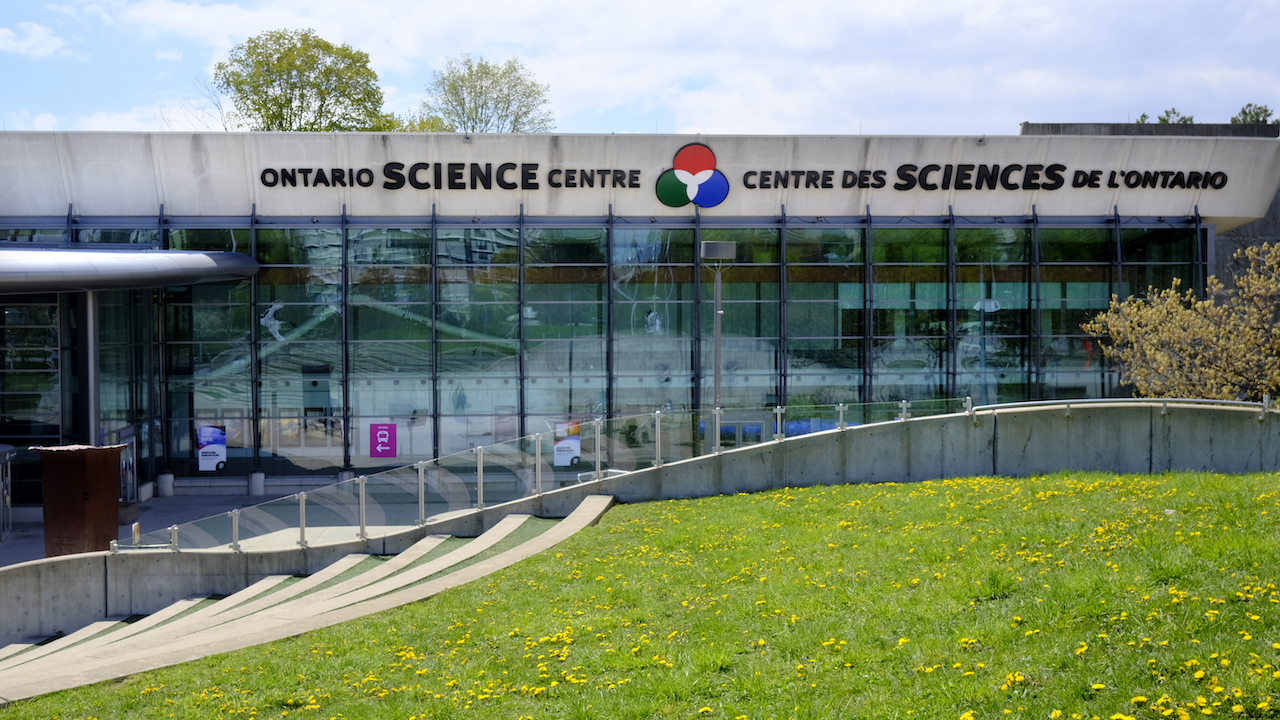World
The Science Centre debate isn’t about engineering — it’s about politics | TVO Today

A general view of the Ontario Science Centre, in Toronto, on May 5, 2023. (Chris Young/CP)
You might have seen a flail before: a medieval weapon, it’s a heavy spiked ball attached to a staff with a rope or heavy chain. The word can also describe an agricultural tool used to thresh grain from its husks. But if you’ve ever used the word in a sentence, you’ve probably had in mind the image of someone swinging their arms wildly in panic or excitement, Kermit the Frog style. The quirks of the English language: the same word can be used to describe a mode of attack, a form of productive activity, or an emotional outburst.
It can also, in the summer of 2024, describe the current state of the Ford government’s attempts to justify its hastily announced closure of the Ontario Science Centre. This is a familiar pattern with the Ford government (though it’s hardly alone in this) going all the way back to its 2019 budget: announce something contentious that people hate, spend some time flailing in your attempt to justify it, then eventually back down. Welcome to Act Two of this play, folks.
Premier Doug Ford promised a presentation this week that would “knock your socks off” and involve details of substantial structural problems with the half-century-old building that would end all debate about whether the government was right to close it. Instead, reporters on Thursday morning were treated to a presentation that largely reiterated things we already knew. A secondary engineering firm conducted a review of work the government had already made public and declared the conclusions to be reasonable. This is reassuring, since stamped and signed engineering reports are, in Ontario, legally protected as part of the engineering profession — knowingly filing a false report carries real legal liability for engineers, something that’s occasionally been the subject of high-level provincial inquiries.
But the due-diligence report produced on Thursday doesn’t fundamentally alter what the first engineer’s report found, either: Yes, there are serious deficiencies in the roof that need to be addressed urgently. But the report simply does not say what the government wants it to: that it had no other choice but to shut the science centre down immediately.
For that argument, we turn to the assertions of Infrastructure Ontario itself. IO personnel listed the numerous technical failings that have accumulated at the science centre as this government and its predecessors neglected it in the name of being penny-wise and pound-foolish. The systems that have been allowed to decay or obsolesce include core functions like heating and electricity, which aren’t exactly frivolous concerns. IO said that the failures both extant and imminent were so severe that they couldn’t possibly have been repaired without closing the centre.
IO, of course, answers to the government of the day. So Ford’s critics aren’t wrong to take all of that with a grain of salt. It is noteworthy that a 2016 report — produced for Kathleen Wynne’s government — also recommended moving the science centre to Ontario Place, though this is hardly a slam dunk for the government’s case.
The Liberals, in 2016, faced two problems of wildly different magnitudes. There was the big, persistent need to balance the province’s budget that put a stranglehold on Wynne’s ambitions for most of her time in office. Simultaneously, there was the small but nagging problem of what to do with Ontario Place, which had been closed by Wynne’s predecessors. Wynne knew what she didn’t want on Toronto’s waterfront — no condos, no casino — but her government was substantially slower to actually implement any long-term renovations there (in large part because of that budget deficit, see above).
People who work for government agencies know that their work needs to solve problems for the government — or at least not make new ones. The 2016 IO report should be read in the light of an agency that saw a way to solve a problem for its government masters while making a provincial attraction a more financially sound asset by moving it from city-owned to provincially owned land. It’s actually noteworthy just how often the 2016 report emphasizes this point.
What the 2016 report did not and does not do is make an ironclad case for permanent closure of the science centre — after all, the government of the day rejected the advice. Even if we accepted everything IO is saying both in the past and present as gospel, it’d still, inescapably, be a political decision by this government, not a technical or engineering one, to throw the science centre on the chopping block. Ford himself set the bar for this week’s presentation by saying it would end the debate: instead, it simply reaffirmed that this is, in fact, a political debate we’re engaged in, not a technical or engineering evaluation.
This would be a dramatically different debate if the government were telling the public that, yes, it’s moving the science centre to Ontario Place but that it’s committed to a public use of a historic building and that it wants to work with Toronto to ensure that the structure is protected and restored. That’s not what it’s saying. On Thursday, the government — allegedly so concerned about the coming snow season and the potential for structural failures — would not even confirm that it will do the work necessary to protect the science centre over the winter months. Until it says otherwise, there’s a real possibility of demolition-by-cabinet-neglect.
I suspect that it won’t actually come to that. The government isn’t backing down yet; it may never back down. But it’s not like we don’t have several past examples to draw on of its reversing course. For now, we can enjoy the summer weather and the comforting return of a familiar moment in the political calendar: the season of the flail.


)






